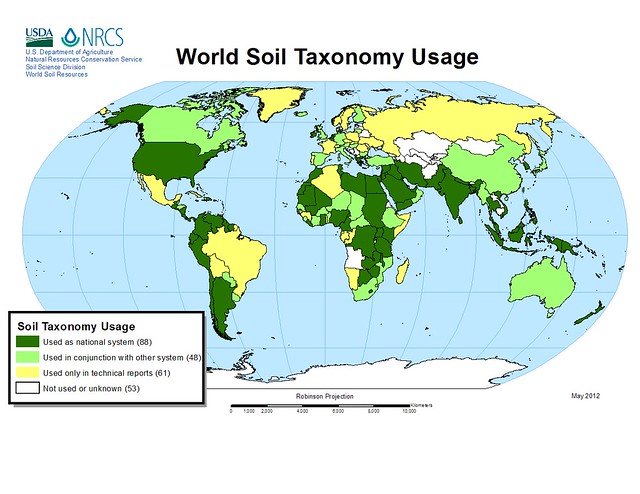
As the world leader in soil classification and soil survey, USDA’s Natural Resources Conservation Service (NRCS), was invited to give a keynote presentation at the XXVII Congress of Soil Science of Argentina held virtually the week of October 12, 2020. Soil Survey Regional Director Luis Hernandez with the NRCS Soil and Plant Science Division represented USDA-NRCS and provided a comprehensive overview of the USA National Cooperative Soil Survey (NCSS) Program.
The NCSS is a nationwide partnership of federal, regional, state, and local agencies along with private entities and institutions. This partnership investigates, documents, and shares information about soils. The NCSS program in the United States is led by the NRCS and goes back to 1899.
Although primarily focused on the inventory and interpretation of the soils of the United States, the NRCS (formerly the Soil Conservation Service – SCS) has enjoyed an international presence in conservation and soil survey since its inception. The first NRCS Chief, Hugh Hammond Bennett, travelled the world in the 1930’s, noting soil and water conservation efforts in other countries. As a soil scientist, Bennett studied conservation problems in other countries, inspiring NRCS’ continued support of foreign governments to wisely develop and use their natural resources.
“Hugh Hammond Bennett’s global vision has inspired many NRCS employees to become engaged in international conservation activities.” Hernandez said. “Personally, I have completed over 35 short-term international assignments in Latin America and Europe.”
Hernandez’s involvement with Argentina’s Soil Survey program began with a chance meeting he had with an Argentinian soil scientist in 2019 while on assignment in Spain. Shortly after, the Argentina Association of Soil Science submitted an official request to NRCS, leading the agency to participate in this year’s conference.

The Congress of Soil Science of Argentina conference is typically held in-person in Argentina, but due to COVID-19 concerns, this year’s conference was held virtually. Conference attendees from the U.S. and Argentina shared knowledge and analyzed the U.S. NCSS program. The Argentina Association of Soil Science led the conference in partnership with the Instituto Nacional de Tecnologia Agropecuaria (INTA), which oversees Argentina’s soil survey program. Argentina is one 88 countries that have adopted USDA NCSS standards for soil survey activities.
Hernandez’s presentation, titled “Latest Advances of the USA National Cooperative Soil Survey (NCSS) Program,” gave insight into how NCSS conducts its soil survey program. He covered a range of topics such as the Urban Soil Survey, Coastal Zone Soil Survey, Ecological Site Inventory, Dynamic Soil Properties, and the Dynamic Soil Survey. You may find a link to the Soil Survey Manual, one of the USA soil survey standards that provides guidance on how to conduct the work.
He also talked about the evolution of the NCSS program through coordinated team efforts across the U.S.
“My hope is this presentation provokes an exchange of ideas for enriching Argentina and USA soil survey program,” Hernandez said. “I also hope this presentation increases Argentinian colleagues’ awareness and knowledge of new initiatives of the USA Soil Survey Program.
“I hope this presentation serves as an instrument to build connections for future collaboration,” he added.
Hernandez also talked about the hard work from teams and partners nationwide that allow the Soil Survey program to continue to improve research in soil survey.
The results of these efforts are seen in the litany of resources on the latest soil information and technology. According to Hernandez, the NCSS program has had a positive impact on Argentina’s research and soil survey sciences as that nation has adopted U.S. standards for soil survey activities.
Through sharing its soil science programs, NCSS continues to promote and support improved conservation practices, economic stability and poverty reduction by solving some of the world’s food production problems through growing relationships with other nations. By being active globally with the USA NCSS Soil Science program, NRCS is supporting U.S. foreign policy along with gaining access to new technologies and best practices from around the world.
Derric Cushman is a USDA Public Affairs Specialist. Derric can be reached at derric.cushman@usda.gov.




